|
 Dwight Peck's personal website Dwight Peck's personal website
Genoa, Italy, in 2012
A restorative February interlude (2)
We've shaken off the brutal European Cold Wave of early February 2012 and decided to recuperate on the south side of the Alps.
You may not find this terribly rewarding unless you're included here, so this is a good time for casual and random browsers to turn back before they get too caught up in the sweep and majesty of the proceedings and can't let go.
   
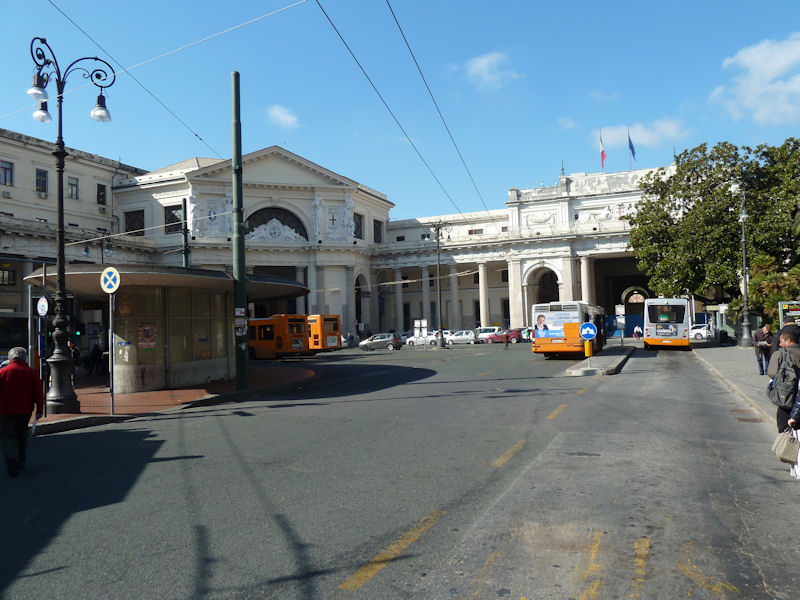
The Piazza Principe rail station on a bright and promising morning. Where shall we go today? Strada Nuova.

But first, just down the Via Balbi, this is the Piazza della Nunziata, and the basilica of Santissima Annunziata, begun by Franciscans in 1520 but chiefly a product of the early 17th century, bombed by the Allies in 1941 for reasons best known only to themselves.
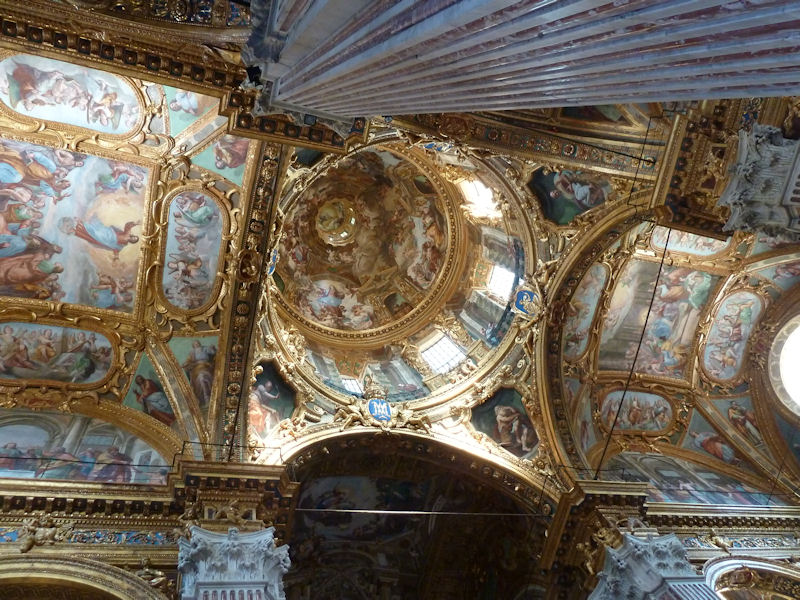
A profoundly serious obsession with decoration
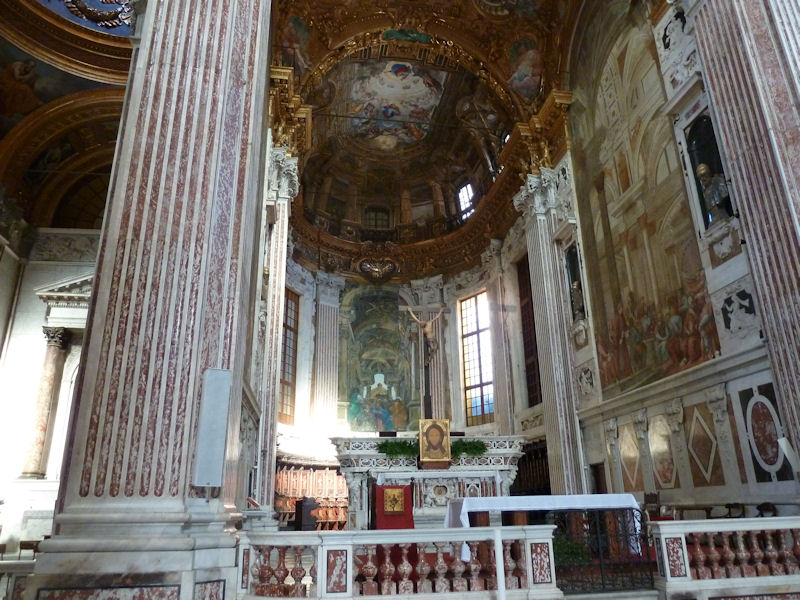
A lot of the usual religious this and that, it seems, but the squared columns are very neat.
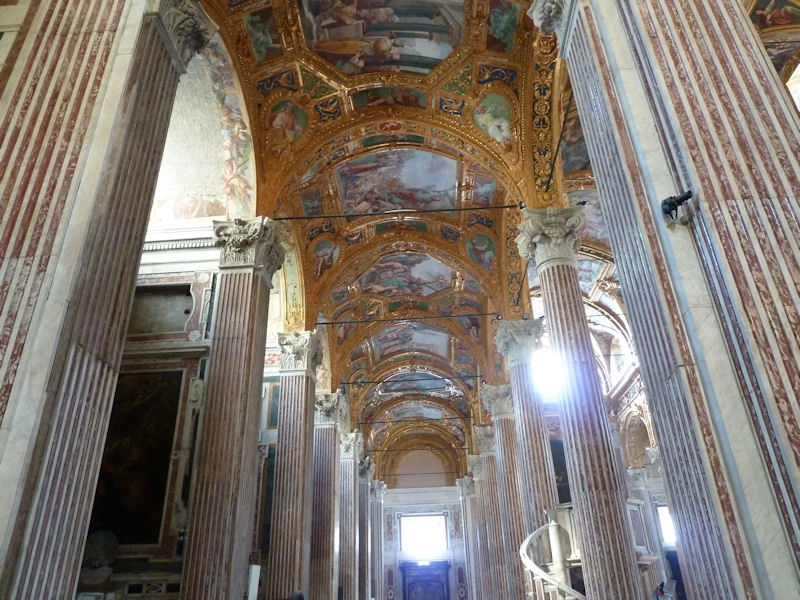
Presumably churchgoers sitting through lengthy exhortations to virtue brought their binoculars with them to pass the time.
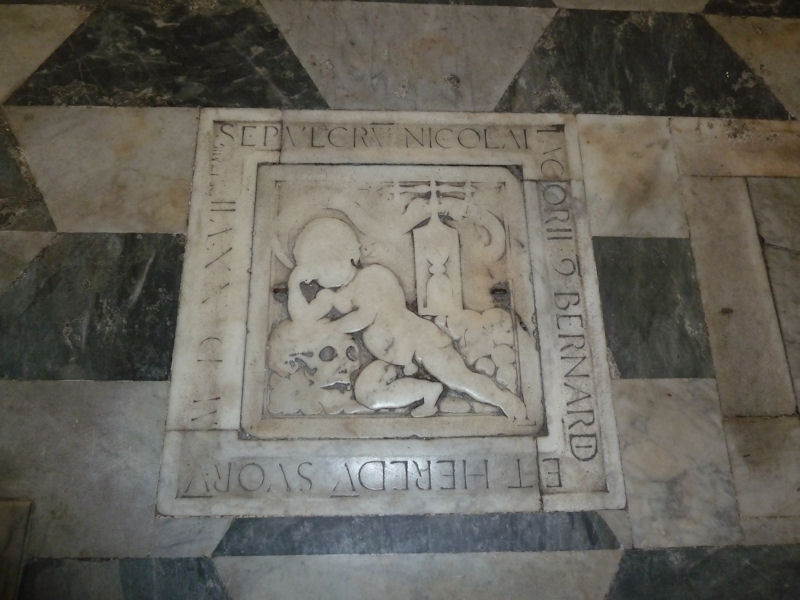
A sad little boy with many important parts worn right off
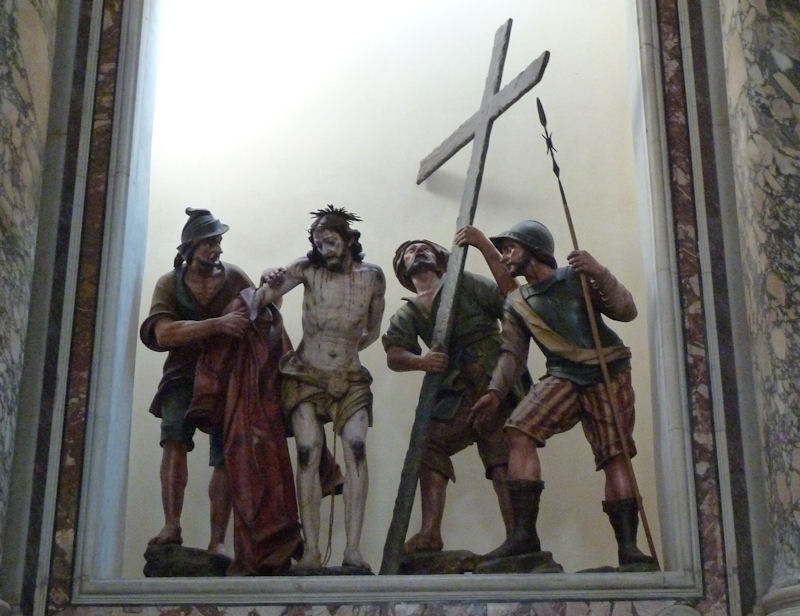
-- Let me hold that for you. It'll be here when you get back.
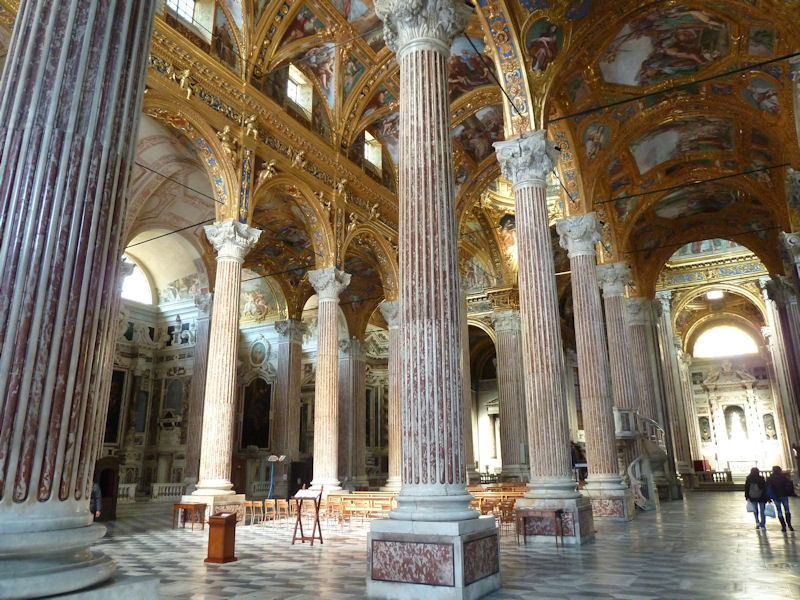
It's easy to be cynical, but the effect of all this overload is really interesting.
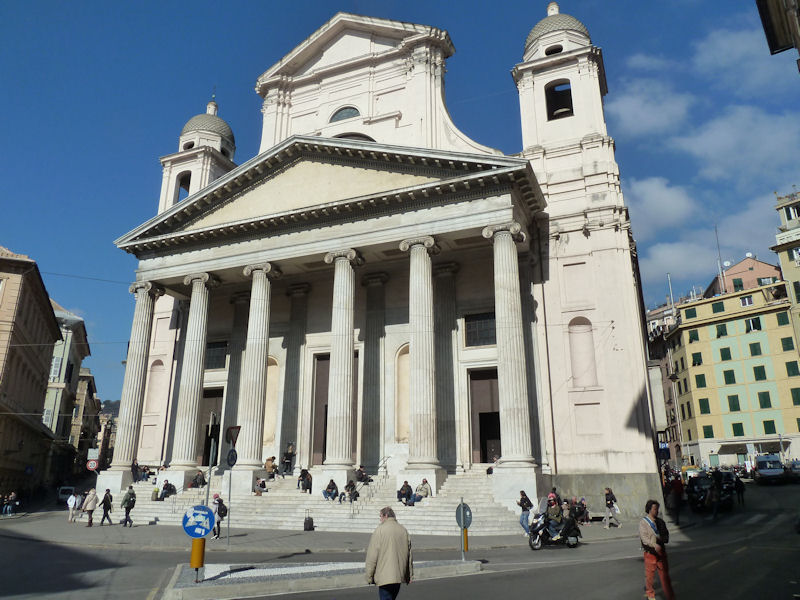
The Basilica della Santissima Annunziata del Vastato again
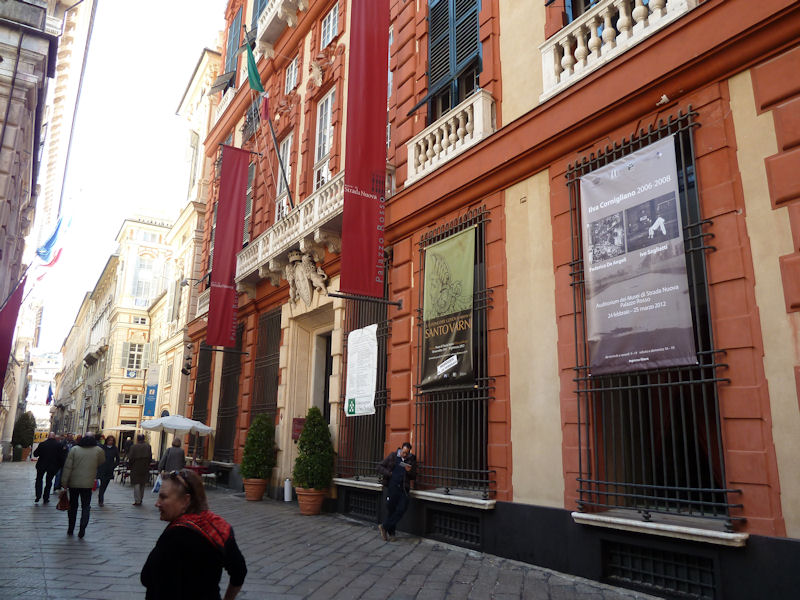
We're back on the Strada Nuova, museum passes in hand, and starting off with the Palazzo Rosso, the Red Palace -- following which, the Palazzo Bianco and the Palazzo Tursi. The 16th century "urban development project" called the Palazzi dei Rolli was added to the UNESCO World Heritage list of cultural properties in 2006 -- the 42 palaces in this neighborhood and nearby (and 80 more at the time) were established in 1576 in the city's "roll" of beautiful private palaces that were qualified for the honor of being used by the city for putting up visiting VIPs, cardinals, ambassadors, vacationing royalty, football stars, the odd epic poet, and so on.

This is an undistinguished addition to our collection of 'Beheadings in Art', with special emphasis on Judith and Holofernes (it's by Veronese, but compared to Artemisia Gentileschi and Caravaggio it's a girl scouts' picnic. Though the ethnic nurse is a nice touch.).
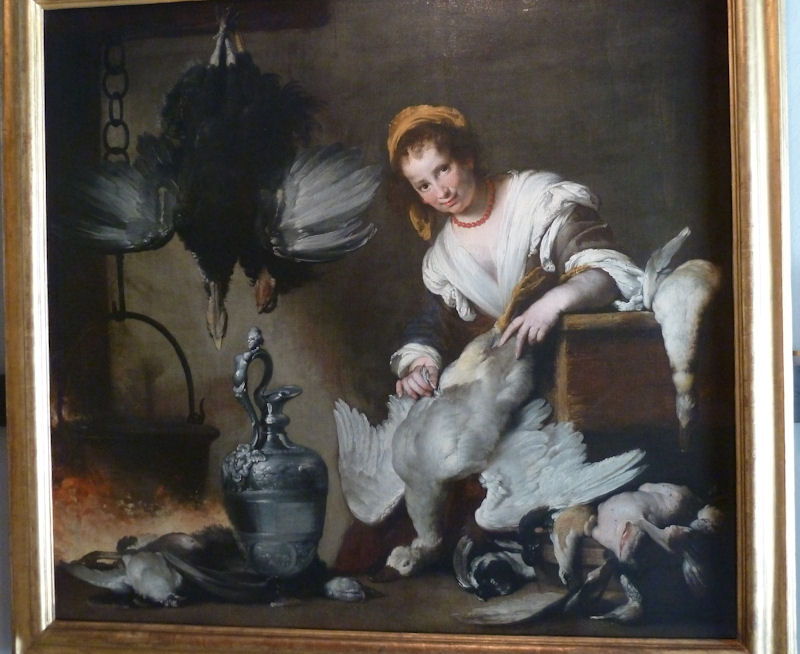
A goose-plucker with a knowing look (and an oddly expensive necklace on) (by Bernardo Strozzi)
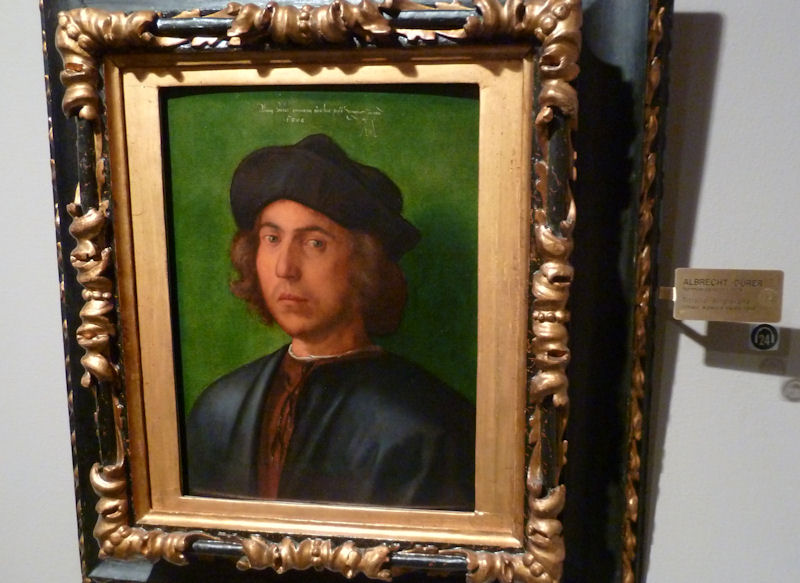
The cold, haunting face of Dürer's 'Young Man'
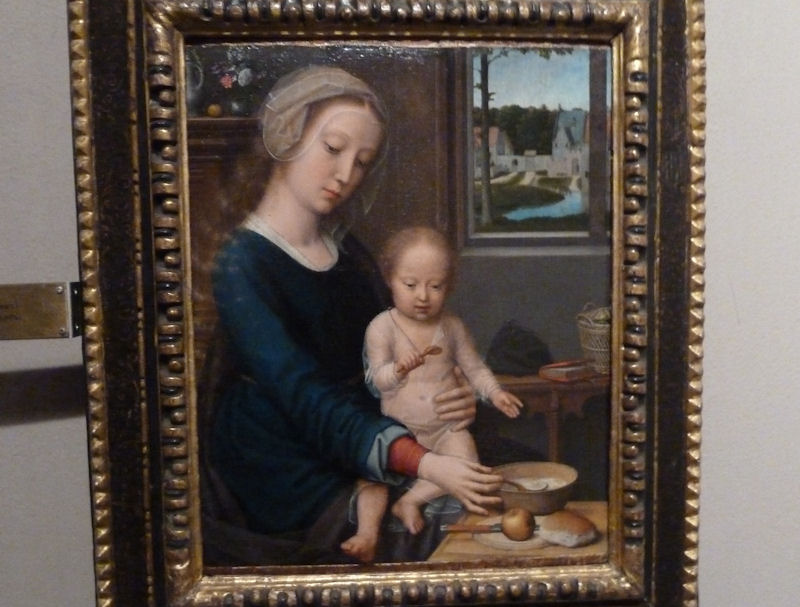
The Madonna of the Babyfood ("della pappa") (Gerard David from Bruges)
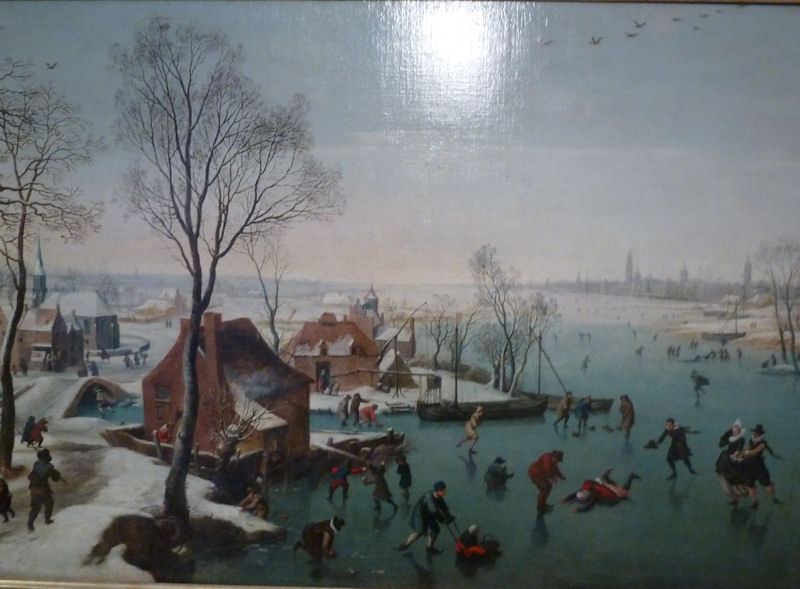
A Flemish-style landscape on the ice by Jan Wildens of Antwerp, a Friend-of-Rubens who worked here in 1613ff. The winter sports include skating, of course, and curling, and there's an unfortunate bare-bottomed lady skater who's just done a face plant on the ice.

Kristin in the boudoir of the Duchess of Galliera of the Brignole Sale family (which donated the palace to the city in 1874)
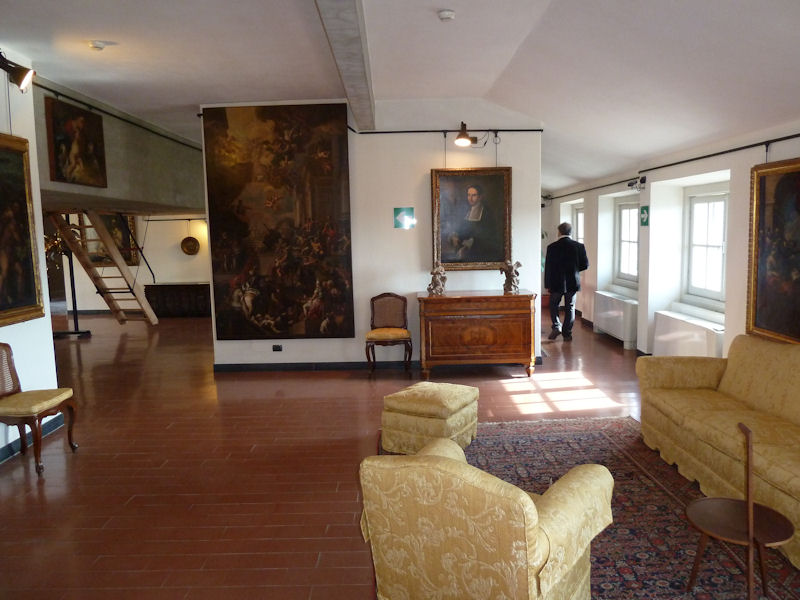
The penthouse suite of the Palazzo Rosso -- the last member of the family, a very cultured lady by the look of it, kept the use of the beautiful modernist flat for as long as she needed it on this planet.
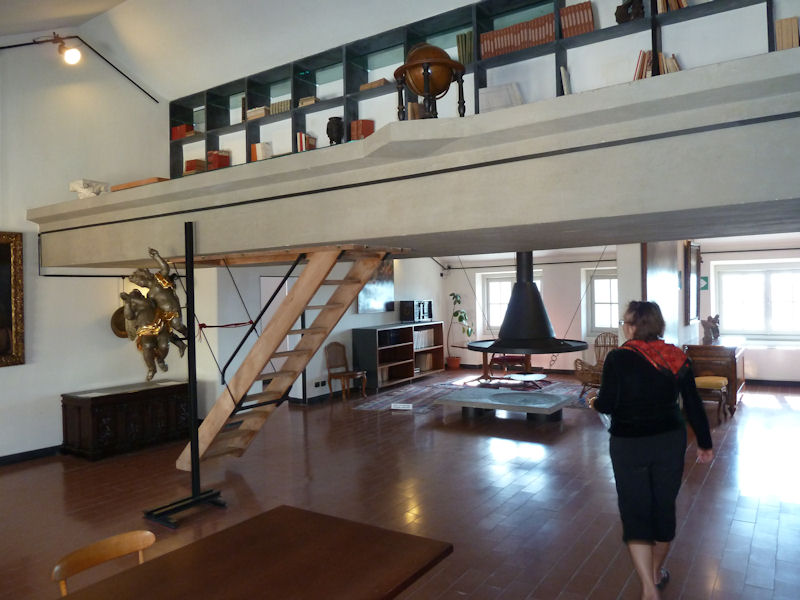
Elegant living, with her favorite art and books and admirable views in all directions
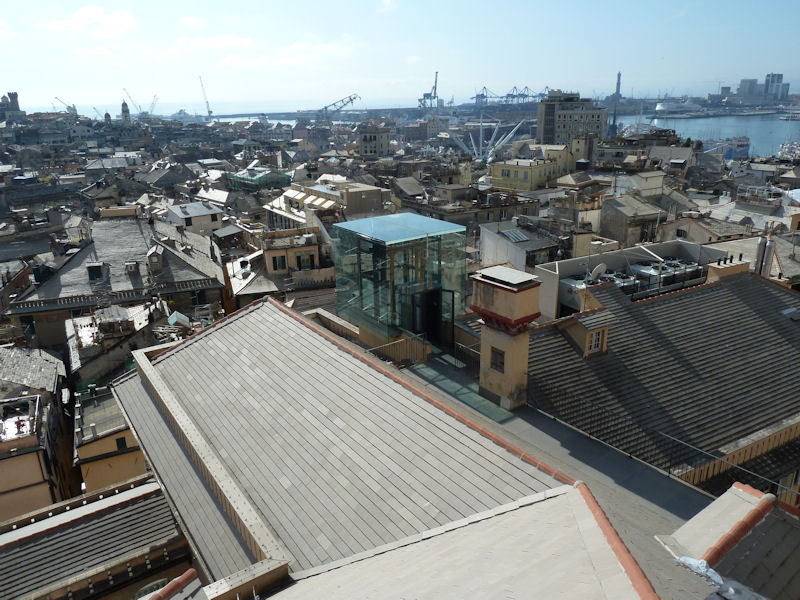
And now, perched high on the pinnacle rooftop (up that elevator shaft), we get the full 360°.
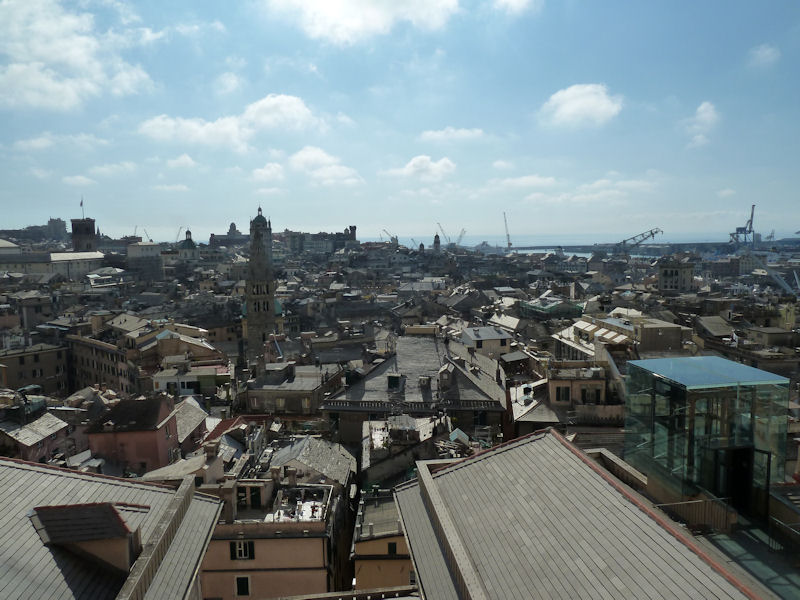
The medieval old town and the port

And some more of it, with some monuments to the 'financial services industry', looking east
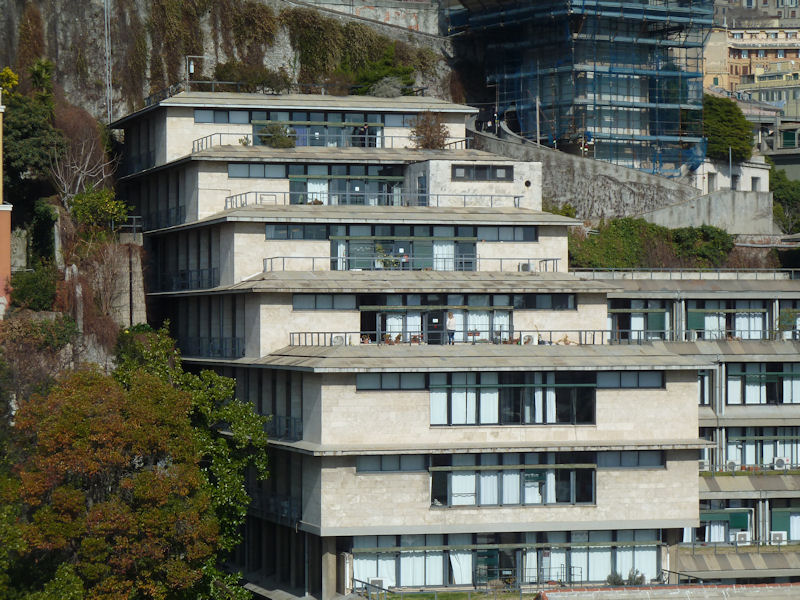
Nice flats built into the hillside behind
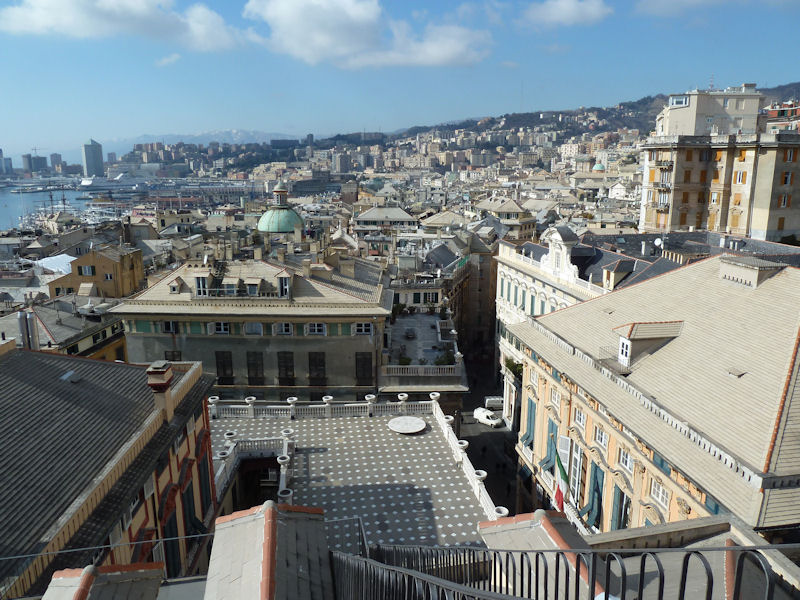
Looking west towards the rail station . . .
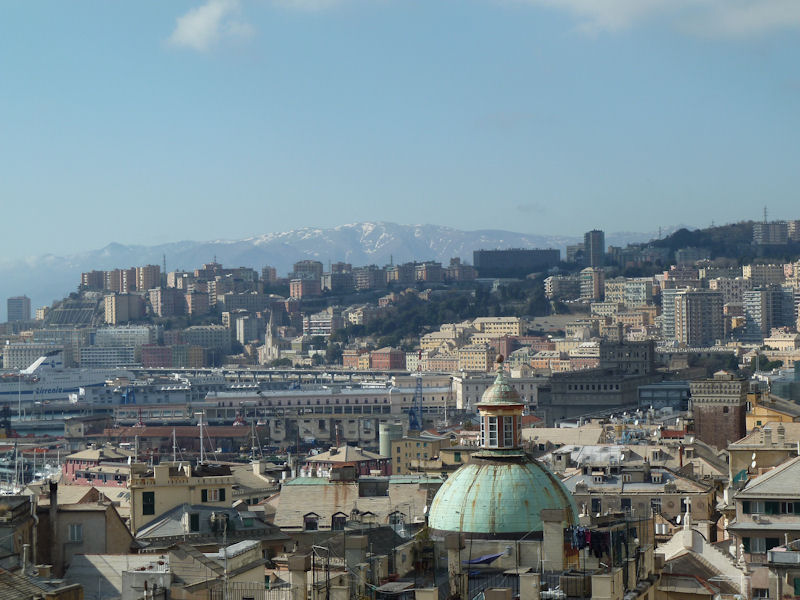
. . . and the mountains

Rooftop art. Dog statues.
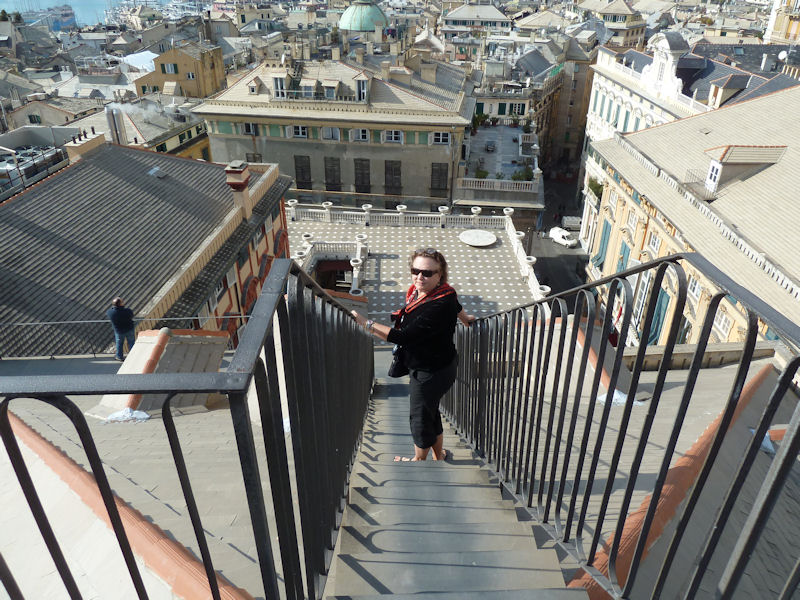
Kristin teetering down off our perch. We're migrating out of the Palazzo Rosso now, and next across the street into the Palazzo Bianco (same pass, same reduced rates for the old people).

More beheadings -- Salome and John the Baptist this time, the #2 favorite beheading theme after Judith and Holofernes. This rather crazy-looking Salome is by the Genoan local boy Andrea Ansaldo.
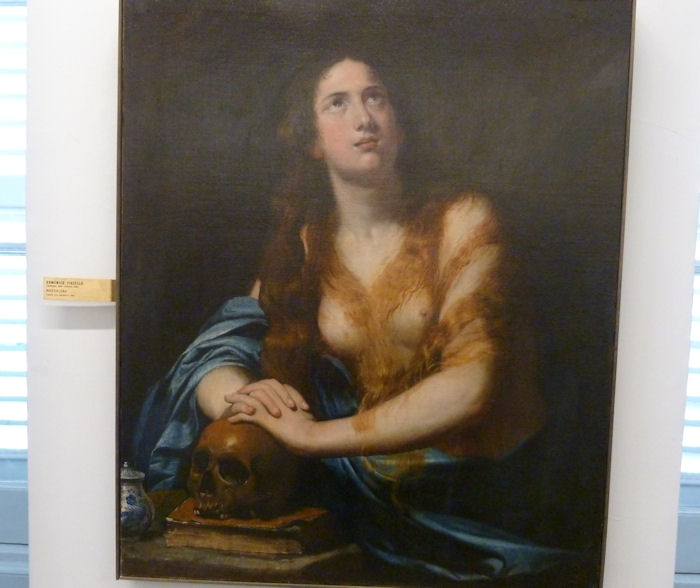
For our Mary of Magdalene collection -- the portrayal of Mary back and forth from vile hooker to misguided young lady to penitent sinner to Christ's only real friend followed historical cycles. This entry by Domenico Fiasella is pious enough and it's got the skull and the book, the long hair and the goods out, but nothing shocks like this Donatello version. (The evolution of the Magdalene's story can be followed in Bart Ehrman's fascinating Peter, Paul, & Mary Magdalene: the followers of Jesus in history and legend (Oxford UP, 2006).
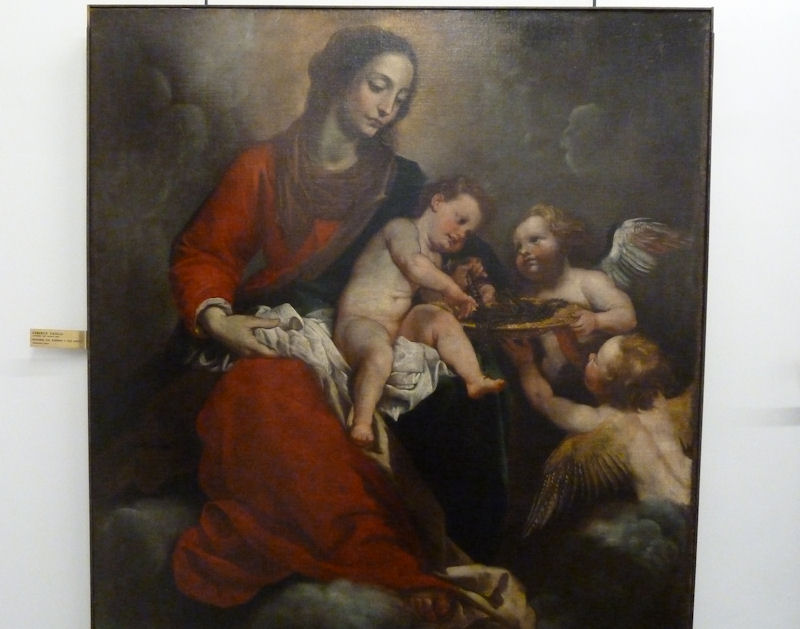
First prize to the Genoese baroquista Fiasella (called "Il Sarzana") for the prettiest Madonna of them all.
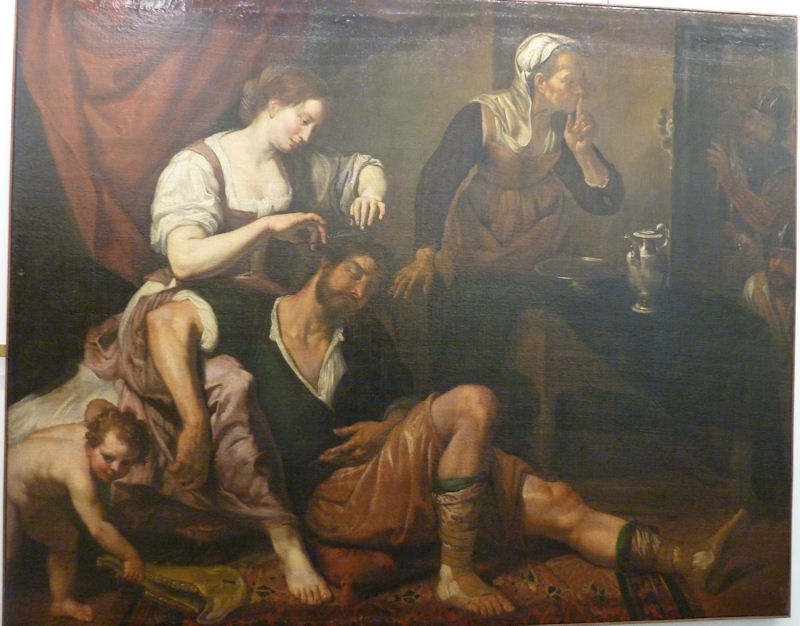
Kristin circumventing Dwight's haircutting protests, and a kid we don't know snatching up a jawbone (Domenico Fiasella's 'Samson and Delilah')

Another Salome (posed with her nurse and John the Baptist), curiously undisturbed by the proceedings (by Matthias Stomer, a late Caravaggioist from the Netherlands who worked in Italy in the early-mid 17th century). Kristin tells me that the post-1600 artistic fad for beheadings followed on from the sensational execution in 1599 of young Beatrice Cenci in Rome, who with other family members killed her abusive and rapist father when the papal authorities protected the aristocratic monster against their pleas.
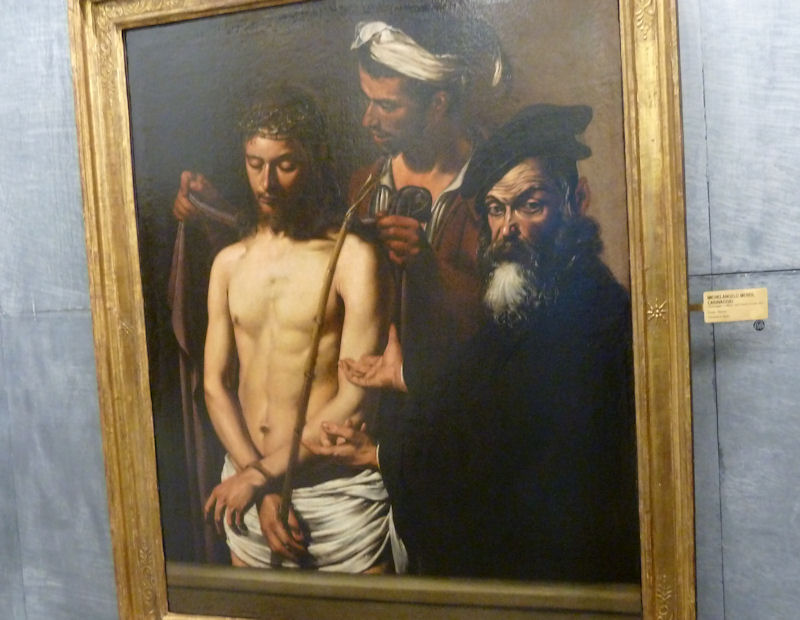
Caravaggio's Christ is worth noticing, but his Pontius Pilate in the 17th century hat is a treat ('Ecce homo').

Il Morazzone's Salome and John the Baptist, with a lot of goofy drama and a soldier's shield with an image from the Poltergeist movie.
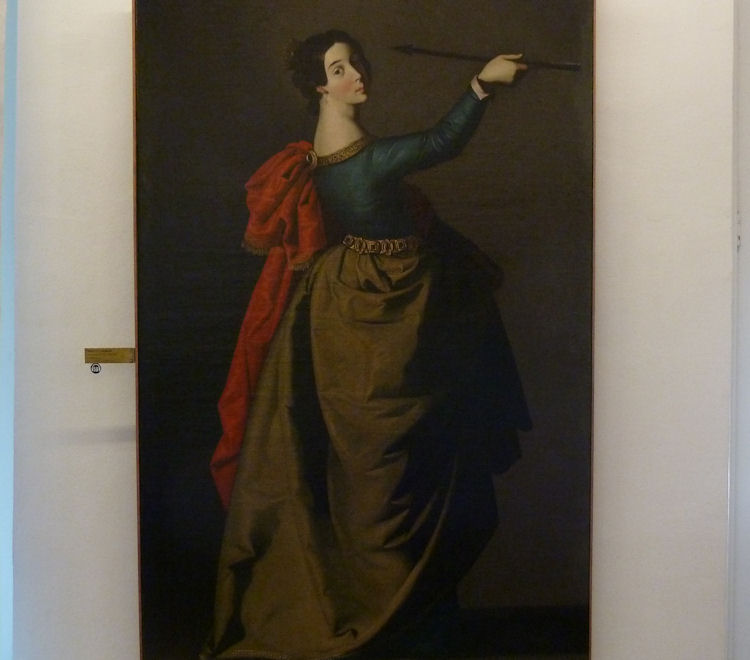
-- I'm determined. Don't try to stop me.
(Or -- The pills didn't work, I'll try anything.)
That's Zurbaran's St Ursula; she was a 5th century British princess who was martyred in Cologne, with her 11,000 virgin followers, by Attila the Terrorist Hun.

This by an unknown master of the 15th century contributes very little to our growing collection of what the Apostles were supposed to have been eating at the Last Supper, but it helps to confirm our conclusion that it was mainly a rat.

First prize to Gerard David from Bruges for the cutest Baby Jesus ever.
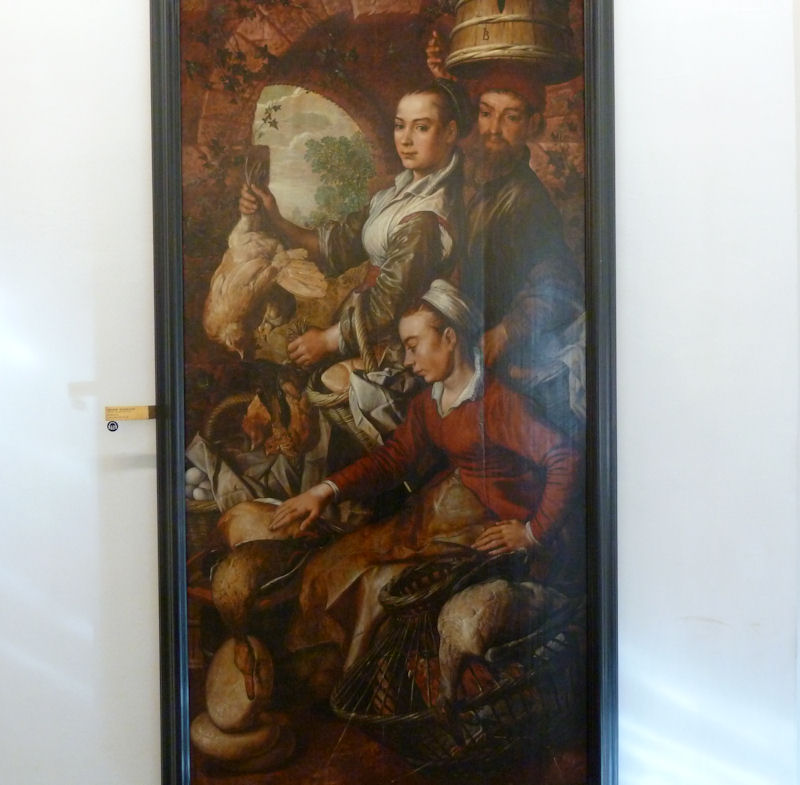
Our all time favorite, Joachim Beuckelaer, with his extraordinary cast of recurring characters in the market.
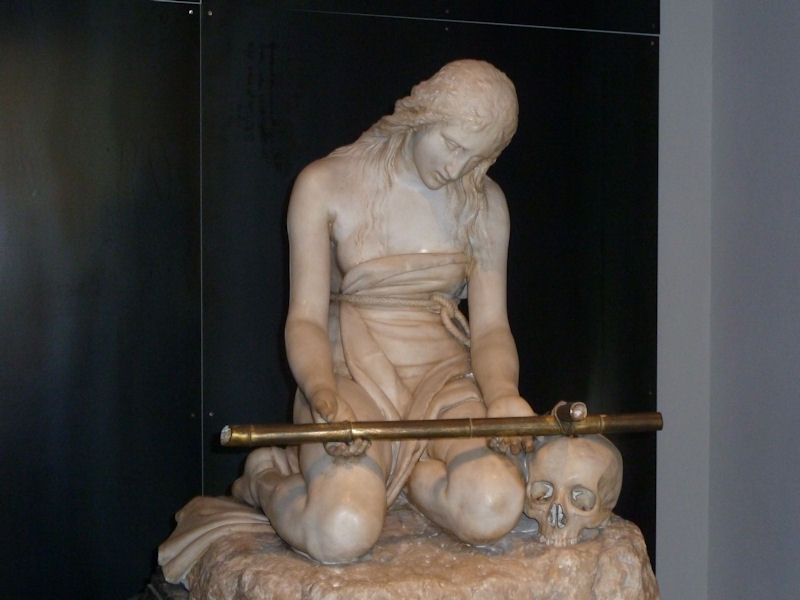
A penitent Mary Magdalene that leaves an impression.
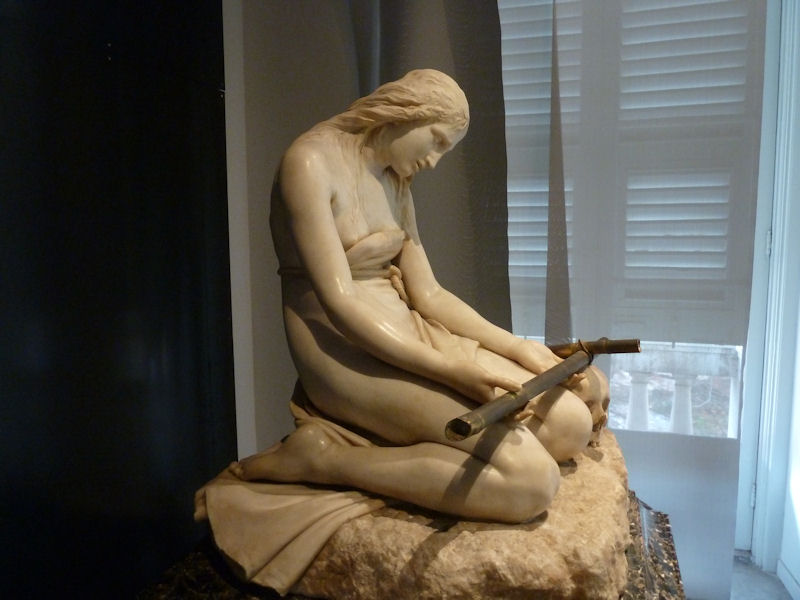
Canova's brilliant 'La Maddalena penitente' -- created in 1794-96, it was owned by the Duke of Galliera and left to his widow, Maria Brignole Sale de Ferrari, the Duchess with the nice flat seen above, who bequeathed it to the city of Genoa in 1889. It's simultaneously in the Hermitage in St Petersburg -- exactly the same or very nearly so, I can't tell.
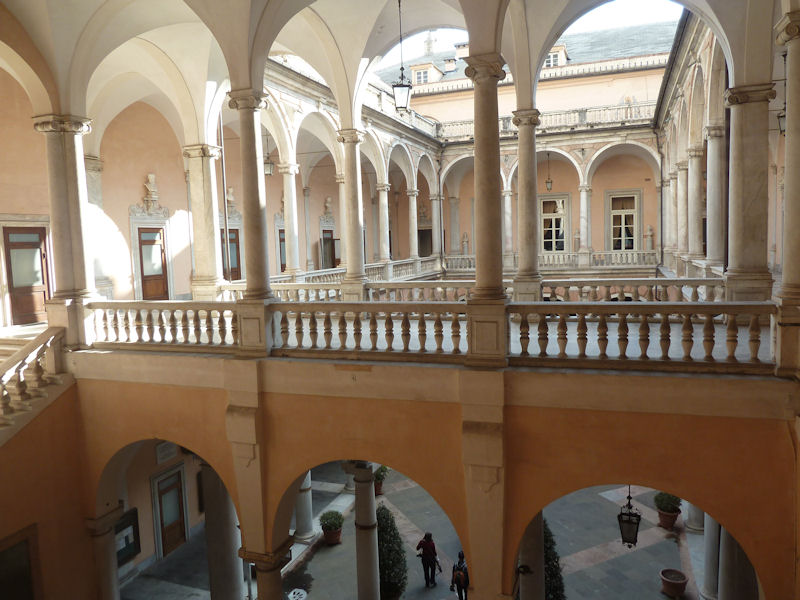
We've come through the secret passage from the Palazzo Bianco to the Palazzo Tursi, tucked in amongst the government offices and Paganini violin collection.
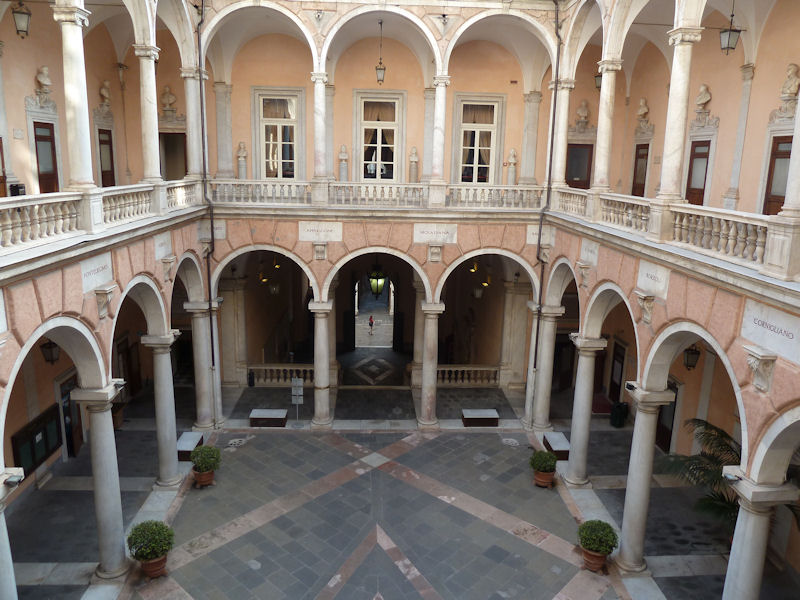
Nice violins, now out of the Tursi and back out onto the street

 Feedback
and suggestions are welcome if positive, resented if negative, Feedback
and suggestions are welcome if positive, resented if negative, .
All rights reserved, all wrongs avenged. Posted 10 March 2012. .
All rights reserved, all wrongs avenged. Posted 10 March 2012.
|
 Dwight Peck's personal website
Dwight Peck's personal website











































